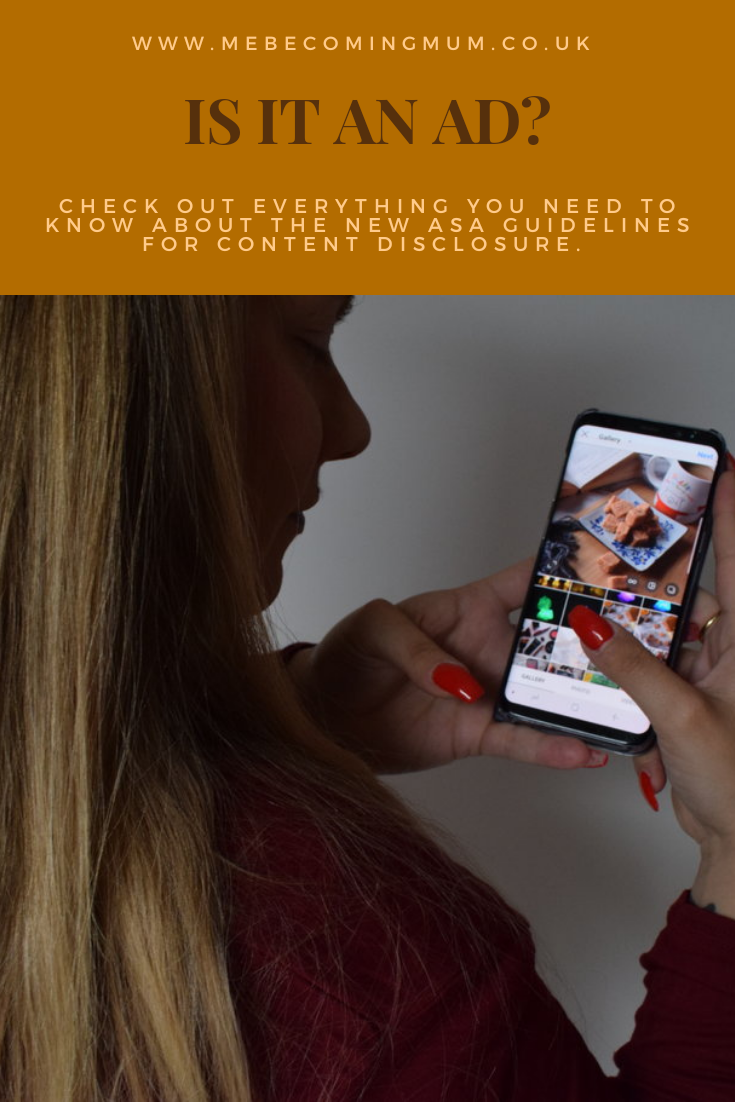Is it an Ad? | ASA Content Disclosure Guidelines
The ASA (Advertising Standards Agency) have introduced new rules for disclosure when it comes to content bloggers and so called, “influencers” share online. This includes posts on websites as well as social media. It is a bit of a minefield, and a lot of people have become very confused by it all. So, here are my top tips for understanding if your content is an ad (or not) as well as how you need to disclose.
Is it an AD?
If you have been paid, or gifted an item; it's an AD. There are three main forms of payment:
You have been sent a product to review or share online.
You have been sent a voucher in return for producing content.
You have been sent payment via PayPal or BACS.
Secondly, if you are required to use specific phrases, hashtags or final editorial consent is required by a brand when sharing content; it is an AD.
If you are sharing discount code or affiliate links where you earn, in effect, a commission; it is an AD.
Last, but by no means least, if you are sharing content in regards to your own business (products, giveaways and more); it is an AD.
Where should I disclose?
Disclosure should be immediately obvious to those seeing the content that it is an AD. This includes:
In the title, and/or meta data of a blog post
It should be clear immediately on seeing any link to your post, whether in the title, meta description or extract. This will mean that it is immediately obvious from search engines and your home page what the content you are sharing is.
At the beginning of a blog post
Blog posts should have a disclaimer stating the kind of collaboration the content is (for example if you were sent an item for review, or paid to share specific content). This includes if you were sent items for inclusion in a round-up post such as a gift guide. Don’t forget you also need to disclose and label all affiliate links too! I use an asterisk (*) to label products I have been sent, and a dagger (†) for any affiliate links I have included.
At the start of any social media content
It must be made clear at the start of all social media posts on Facebook, Instagram (including stories), Pinterest, Twitter and YouTube. This is because people do not always click the ‘... more’ on Instagram or ‘... See More’ on Facebook.
What wording should you use in your disclosure?
The ASA website states that all disclosures must be clear and understandable to the masses. This means you must specify the type of collaboration your AD is. Here are some of disclosures I use:
[AD] For any content I have been paid to produce, either by PayPal, BACS or gift voucher.
[AD | Gifted] For any content where I was sent an item to review or include within a gift guide or similar roundup. For example sharing a photo of an item I was sent to try out for my Mother’s Day gift guide on Instagram here.
[AD | Press trip] For any content produced sharing a day out, holiday or experience where I was not paid to attend but given the opportunity to attend thanks to free entry or stay. For example our Red Letter Days night away for two reviewed on my blog here and shared on Instagram here.
[AD | Ambassador] For any content where I am an unpaid ambassador for the brand. This will often mean I receive one or more products from them as well as a discount code for my followers.
The Influencers Guide
Hopefully you are now a little clearer on the rules surrounding ADs on blogs and social media. If you are still not 100% sure the ASA and CAP (Committee of Advertising Practice) have created an awesome flow chart that you can follow when disclosing your upcoming collaborations.
I am by no means an expert on this but I have done extensive research into the rules to make sure that I don't get it wrong. As you have seen I have shared the sources of my information throughout this post and all of it has come direct from research on the ASA website. I hope it is a bit clearer for you now and you can carry on posting online to your hearts content.



Here are my top tips for understanding if your blog and social media content is an ad or not.